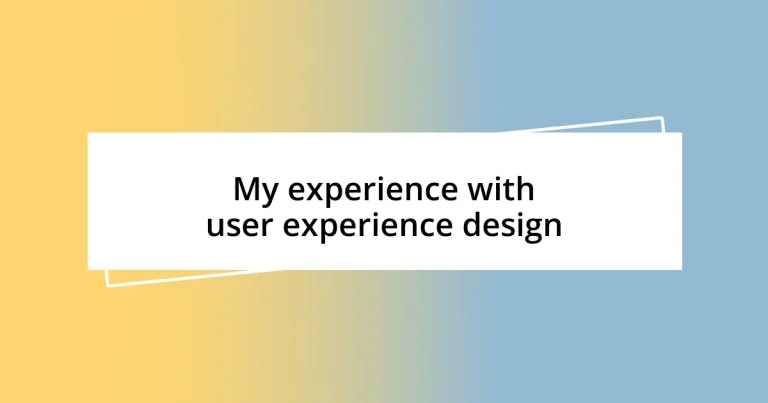Key takeaways:
- UX design focuses on creating an emotional connection and seamless journey for users, not just aesthetic appeal.
- Empathy maps help visualize user emotions and motivations, aiding in the understanding of their needs.
- Usability testing is crucial for identifying overlooked issues, emphasizing the importance of iterative design based on user feedback.

Understanding User Experience Design
User experience design, often abbreviated as UX design, is all about how people feel when they interact with products or services. I remember my first project where I watched users struggle with a complicated interface; it was an eye-opener. Suddenly, it was clear to me: UX isn’t just about looking good—it’s about creating a seamless journey that connects emotionally with the user.
As I delved deeper into UX design, I encountered the concept of empathy maps. These tools helped me visualize user emotions and motivations, illuminating their needs in a way I hadn’t considered before. Have you ever put yourself in someone else’s shoes during a design project? It’s fascinating how that shift in perspective can lead to breakthroughs in creating user-friendly solutions.
In my experience, usability testing has been a game changer. Watching real users navigate the designs I created—sometimes with confusion—brought to light issues I had overlooked. It emphasizes the importance of iterating based on feedback because every small change can significantly enhance a user’s experience. That’s the beauty of UX design: it’s always evolving, just like our understanding of what users truly want and need.














